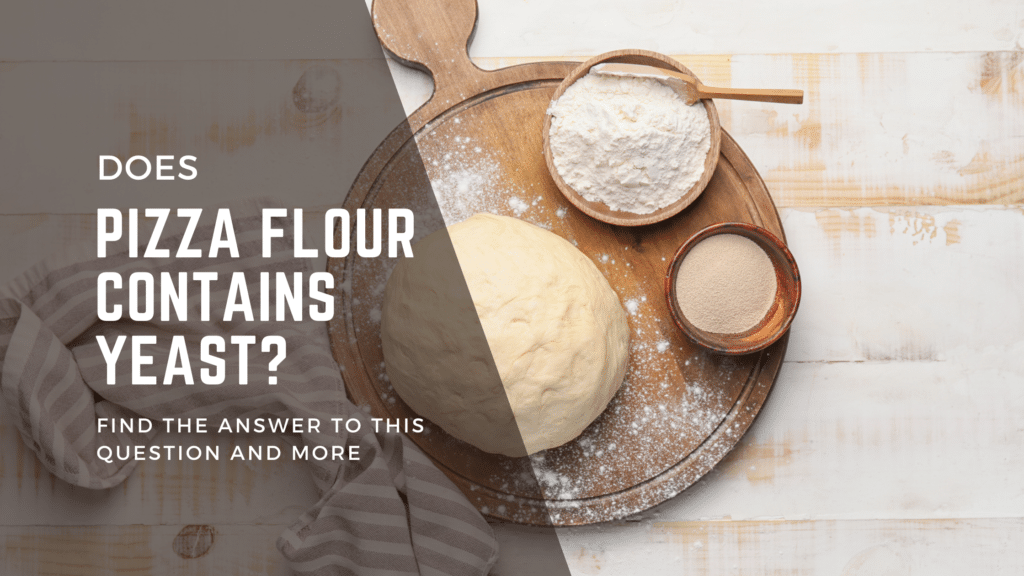Ever wonder what gives pizza its mouth-watering, fluffy, and crisp crust?
It’s all about the magic happening behind the scenes in the kitchen!
Many of us simply enjoy the final product without considering the essential ingredients contributing to its perfection. One such question that often sparks curiosity is, “Does pizza flour contain yeast?”
You might be surprised to find out!
Dive into the delicious pizza-making world with us as we unravel the mysteries of pizza flour and yeast.
Will we knead yeast into our pizza flour or not?
Keep reading to embark on this delicious journey of discovery.
Let’s get started!
Here’s What You Will Find:
Yeast in Pizza Dough
People add yeast to pizza flour to help grow the dough. We all have that perfect image of our pizza and the skills to transform the picture into reality.
Therefore, to achieve the perfect pizza, you should focus on the toppings, but most importantly, the crust.
Many people like the brown, crispy, chewy, and moist dough with a tasty sauce that contains their favorite toppings.
Finding the perfect yeast is the one thing that is stopping you from getting your delicious glazed crust. But how does the yeast affect the dough?
Can you get pizza flour that already contains yeast?
Does Pizza Flour Contain Yeast?
Pizza flour does not inherently contain yeast; they are separate ingredients used in the process of making pizza dough. No flour milling company produces pizza flour that has yeast.
Yeast is a living microorganism; when you mix it with flour, the organisms feed on the sugars. When the organisms feed on the fermented sugars, they produce carbon dioxide, which causes the dough to rise.

Therefore, pizza flour manufacturers find it challenging to include yeast because the packaging needs to be airtight.
People can argue that you need warm water to activate the yeast-however, the manufacturer stores yeast in airtight packages to prevent moisture from getting in the package.
Even when they store in moisture-proof packs once it gets to the market, consumers will need a lot of effort to keep them away from moisture and warmer temperatures. If yeast gets in contact with air or moisture, it will die.
So what makes pizza flour so unique? What is it?
What is Pizza Flour?
Pizza flour, also known as 00-grade flour, is a specialty flour with qualities that make it ideal for making pizza in high-temperature ovens.
Pizza flour It’s finely milled white bread flour with a moderately high gluten content and a soft texture. Ideal for Neapolitan pizza!
Our favorite pizza flour is from Caputo Flours.
Here is What the PROs at Homemade Pizza Pro Use and Recommend
A flour with elastic, resistant gluten and protein resulting in a long-rise dough. Ideal for classic Neapolitan pizza made in high heat wood fired, gas or electric ovens in high temperatures over 700 degrees F.
What Does Flour Contain?
Flour is a powder made from grinding raw grains, seeds, legumes, and nuts. Depending on the source material, its composition can vary. However, the most commonly used flour, wheat flour, primarily contains the following:
- Carbohydrates: The largest component of flour is carbohydrates, present in the form of starch. This is what provides energy and structure in baked goods.
- Protein: Wheat flour contains a significant amount of protein, including gluten, which gives dough its elastic quality and helps baked goods rise and hold their shape.
- Fiber: Whole wheat flour contains a good amount of dietary fiber, which is mostly removed in refined white flour.
- Fat: Flour contains a small amount of fats, most of which are in the germ of the wheat grain.
- Vitamins and Minerals: Whole wheat flour contains various vitamins and minerals, including B vitamins, iron, and magnesium. However, these are mostly removed in refined flour unless it is enriched.
- Enzymes: Flour naturally contains enzymes, like amylase, which can break down the starches into sugar. This can be utilized by yeast during fermentation.
Flour does not naturally contain yeast, salt, sugar, or any other leavening agents. These are typically added separately during the baking process.
What is Pizza Yeast?
“Pizza yeast” is a term often used to refer to a specific type of yeast product that’s formulated to make the pizza dough preparation process faster and more straightforward. It’s typically a variety of instant yeast (also known as fast-rising or bread machine yeast) that doesn’t require proofing—a process where yeast is dissolved in warm water to activate it.
Pizza yeast often includes dough relaxers that make the dough easier to shape and stretch, preventing it from springing back as you’re trying to form it into a pizza. This can be particularly helpful for home pizza makers looking for a more pliable, easy-to-handle dough.
Despite its name, pizza yeast can be used in any recipe calling for instant yeast. However, it’s specifically marketed for pizza due to its added convenience for this particular type of dough.
As with any yeast, pizza yeast is used to ferment sugars in the dough, producing carbon dioxide gas which causes the dough to rise and gives the pizza crust its airy and chewy texture.
What Happens to Pizza Dough Without Yeast?
It is possible to make pizza without yeast, but you can use
Working with pizza dough containing
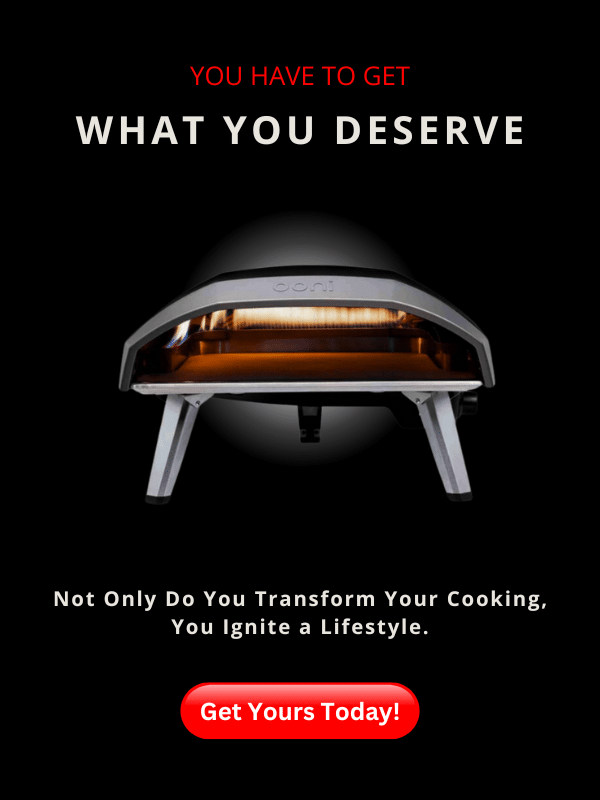
Can You Use Self-Rising Flour as A Substitute?
You can use self-rising flour to make pizza. But, the self-rising flour doesn’t produce the chewy, brownish, and tasty crust like the yeast. Why? Self-rising flour contains plain flour,
First of all, plain flour doesn’t have as much protein as pizza flour. Protein is what decomposes to form gluten. Gluten is what makes the dough more elastic.
Self-rising flour contains
You must wait longer for the dough to settle and break down protein into gluten. The dough also has a limited ability to stretch.
People who use
However, you don’t add any flavors to the pizza dough while baking. So when you use the self-rising with
Types of Yeast to Use with Pizza Flour
Please don’t just pick up any pizza on the counter shelf. You will notice that a few yeasts contribute to the tasty crust when baking pizza.
You have probably seen instant, active, dry, and fresh yeast. What is the difference between the three?

Instant Yeast
As the name suggests, the yeast is ready for use. Instant yeast is commonly packaged in small, individually sealed packets for convenient measurement and use in baking recipes. You can easily add it to your dough, and it will immediately start working.
You can add it to your recipe without adding warm water. That is why we also refer to it as fast-rising or quick-rise yeast. The granules of instant yeast are smaller than those of active dry yeast.
Active Dry Yeast
Many people use active dry yeast for their pizza, and many recipes and bloggers suggest it is the best. Well, that is not the case. It all depends on how you use the yeast in the dough.
Manufacturers dry or dehydrate the microorganism for it to last longer. However, when you want to use it, you must add water with temperatures of around 95F to 105F before adding it to your recipe. The good thing is that active dry yeast can last up to 5 years when left unopened.
Once opened, you can also freeze it.
Many people also use it because it is cheaper and quickly find it in a store.
Check our related article to learn more about the difference between Instant vs Active Dry yeast.
Fresh Yeast or Cake Yeast
We refer to fresh yeast as “cake yeast” because we mostly use it for baking cakes. Fresh yeast is not better than active dry yeast because the flavor is subtle.
However, the flavor is an essential part of the dough’s making. But if you like a subtle taste, you should use fresh yeast. You also don’t need to activate fresh yeast with water.
The fresh yeast also spoils quickly. So, you should store it in the refrigerator for two weeks.
Steps for Adding Yeast to Flour:
All the yeasts give the same results when you use them in your dough. There will not be any difference in terms of weight and volume. However, you should follow a few steps when adding each to your dough.
The yeast should not be more than 1% of your total flour if you are using the baker’s percentage method.
Adding Instant Yeast to Flour
Since instant yeast is ready for use, you can add the yeast to your bowl depending on the amount of flour. Mix the flour and continue to knead the dough.
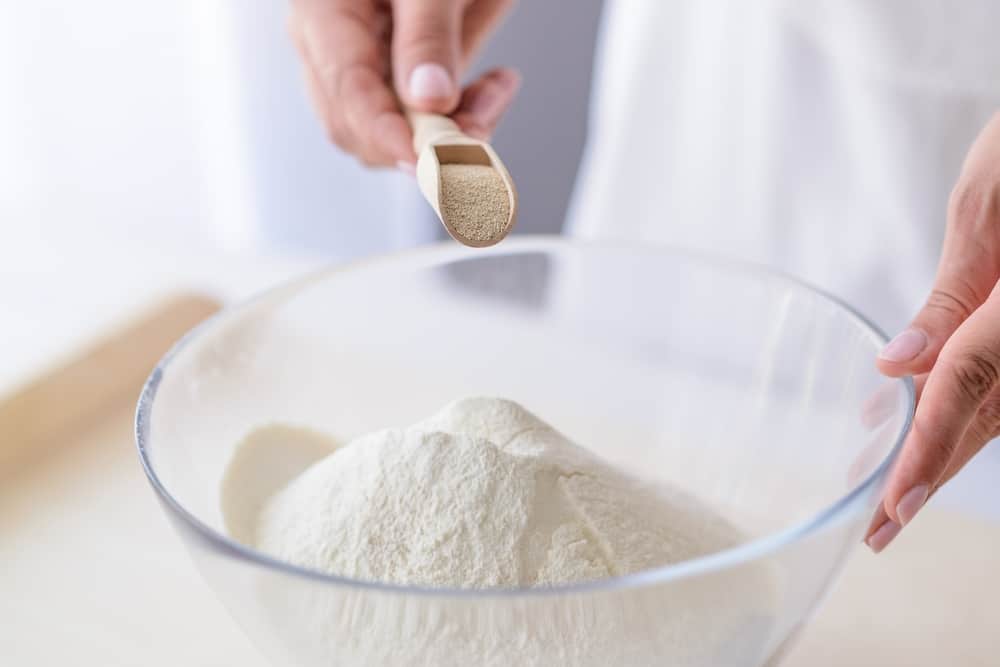
Usually, for 500 grams of pizza dough, you can add two pinches of instant yeast for overnight use. You can use 1-3 teaspoons of instant yeast when you plan to use it the same day.
Active Dry Yeast
Since active dry yeast is dehydrated, you can add water to activate the organisms. To do so, follow this procedure: add 1-4 teaspoons of yeast to 500 grams of dough. That is for an overnight stay. If you want to use the dough the same day, add 3-4 teaspoons of yeast to the mixture.

How to Activate Active Dry Yeast
1. Warm your water to around 95F-105F and pour it into a cup.
2. Add the sugar to the water and stir.
3. Then add the yeast and stir until the yeast dissolves.
4. When the yeast starts producing tiny bubbles, it is ready. Now, add the solution to your dough and continue kneading.
5. Because of the solution, you should remember to decrease a cup of water in your dough mixture.
6. Let the mixture sit for a while or overnight.
Fresh Yeast or Cake Yeast
You can use 25g of fresh yeast in 500g of flour. Here is a simple guide to adding fresh yeast to your dough:
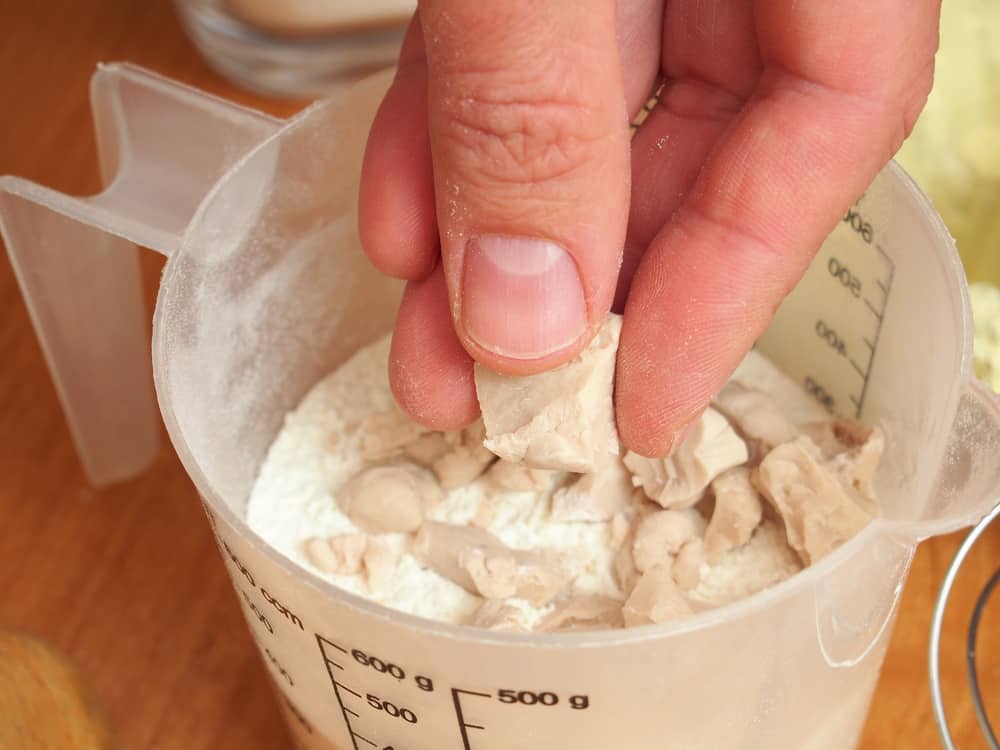
How to Add Fresh Yeast to Flour
1. Take a bowl with salt and crumble fresh yeast with your hands.
2. Add flour to the bowl and continue rubbing the crumbled yeast.
3. Add warm water that is about 90-100 F.
4. You can then add the other ingredients to prepare the dough.
5. Leave the dough to settle for a few hours or overnight.
Do you want to know which is the best yeast for pizza? We got it!
Find the best yeast for pizza dough and the one we recommend.
Does Pizza Contain Yeast?
Yes, traditional pizza dough typically contains yeast, which helps the dough to rise and gives the crust its characteristic texture and flavor.
Yeast plays a pivotal role in pizza making. Typically, pizza dough consists of flour, water, salt, and yeast. The magic of yeast is its ability to ferment the sugars in the flour, producing gas that makes the dough rise. This gives the pizza crust its airy texture and tangy flavor. Without yeast, our pizza would be flat, lacking the chewy character we adore.
However, not all pizzas need yeast; thin crust or flatbread styles offer a different but equally enjoyable experience. So, while the pizza dough is simple, the yeast brings it to life, shaping the delicious pizza we all love.
FAQs
Does Pizza Dough Contain Yeast?
Yes, traditional pizza dough does contain yeast, and this tiny organism plays a crucial role in the pizza-making process. Yeast is responsible for fermenting the sugars in the flour, producing carbon dioxide gas that makes the dough rise.
This leavening process creates a pizza crust that is light, airy, and has a distinctively chewy texture and subtly tangy flavor. Without yeast, pizza dough would be flat and lack the characteristic mouthfeel we associate with a delicious pizza.
So, while the ingredients list for pizza dough might seem simple – typically comprising flour, water, salt, and yeast – the addition of yeast is what brings the dough to life, transforming it into the perfect base for your favorite pizza toppings.
Does Flour Contain Yeast?
No, flour does not naturally contain yeast; it’s a separate ingredient that’s often added to flour in recipes that require the dough to rise, such as bread and pizza.
Does Wheat Flour Have Yeast?
No, wheat flour does not naturally contain yeast; yeast is a separate ingredient that is often added to wheat flour in baking to cause the dough to rise.
Does Bread Flour Contain Yeast?
No, bread flour does not naturally contain yeast; yeast is a separate ingredient that is often added to bread flour in baking to cause the dough to rise.
The Last Slice
We hope we’ve answered your question,” Does pizza flour contain yeast.” Finally, we have learned about the various types of yeast that make the best pizza and how you can add them to your pizza.
It would help to remember that pizza flour doesn’t contain yeast, and self-rising flour is not the best idea.
Now that you have the simple tips in the back of your mind, you can start baking your homemade pizza.
Take a picture; we would love to see it on Pinterest.
Additional Flour Resources
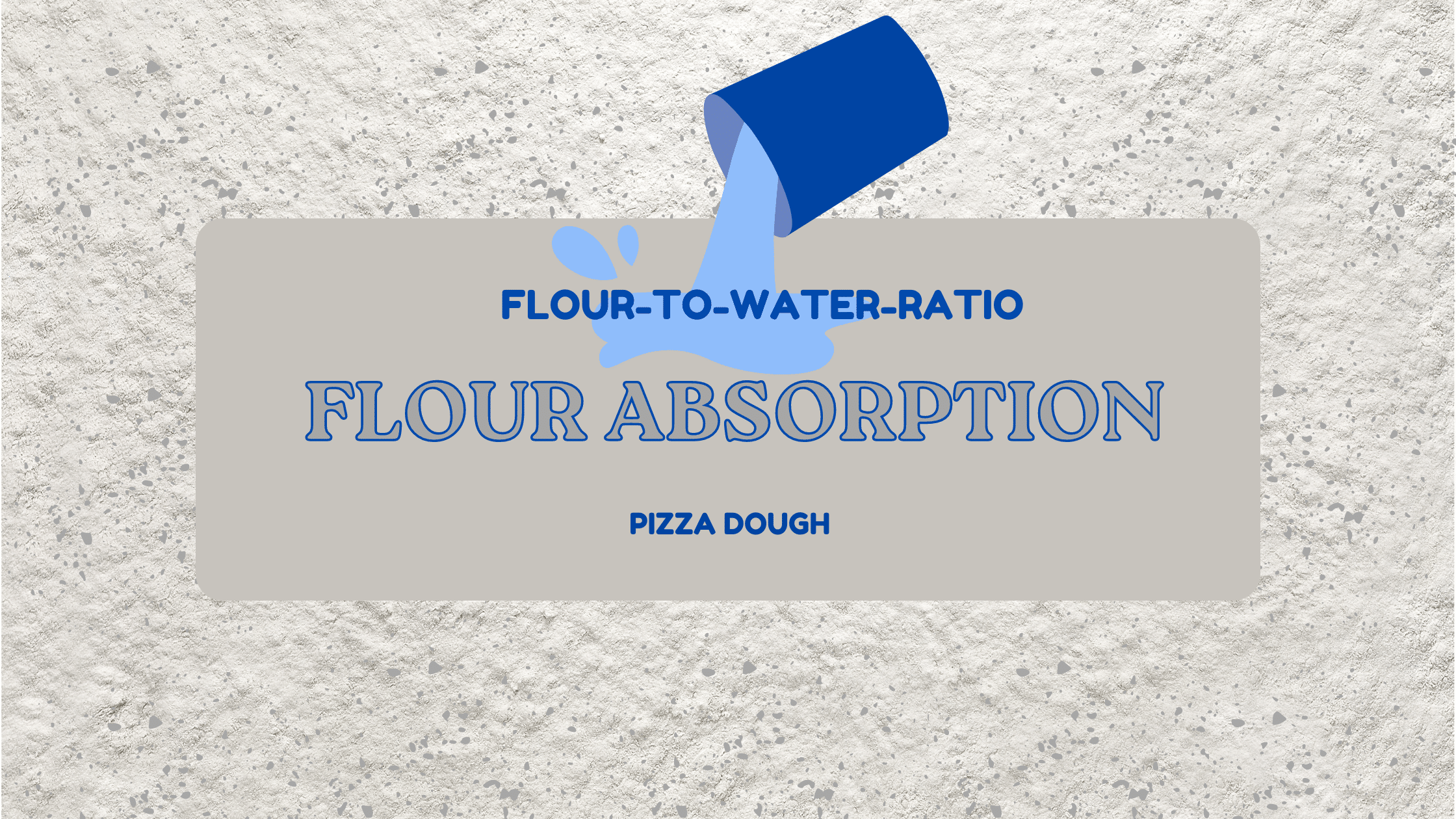
Flour Absorption 101: The Key to Crafting the Perfect Pizza Crust
the PROs
Ah, pizza. The one food that unites us all! What would we do without our delicious, cheesy slices of heaven? …
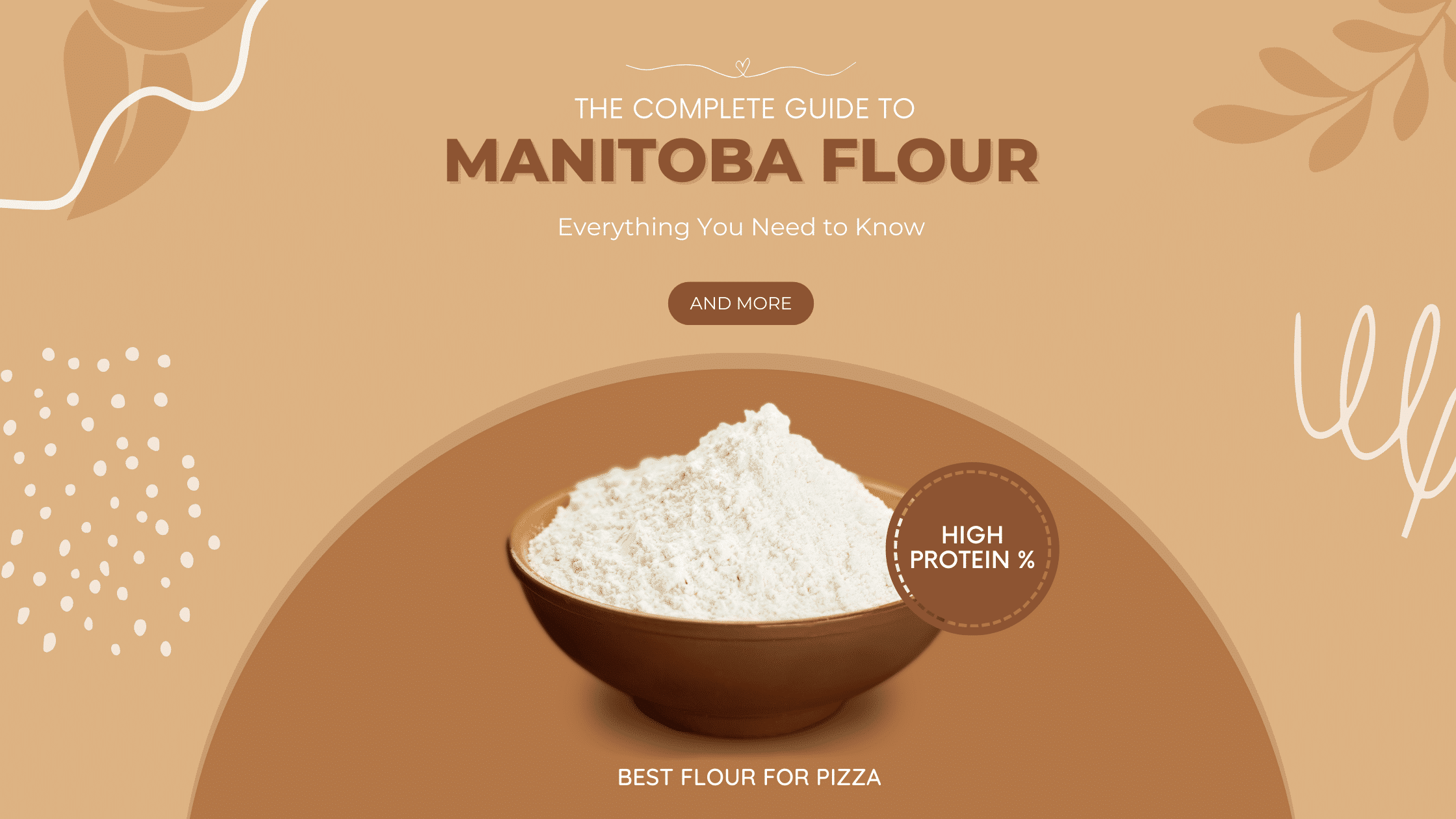
Manitoba Flour: Unlocking the Potential of the #1 High-Gluten Flour
the PROs
You might have heard about Manitoba flour and are wondering what all the fuss is about. Well, let us tell …
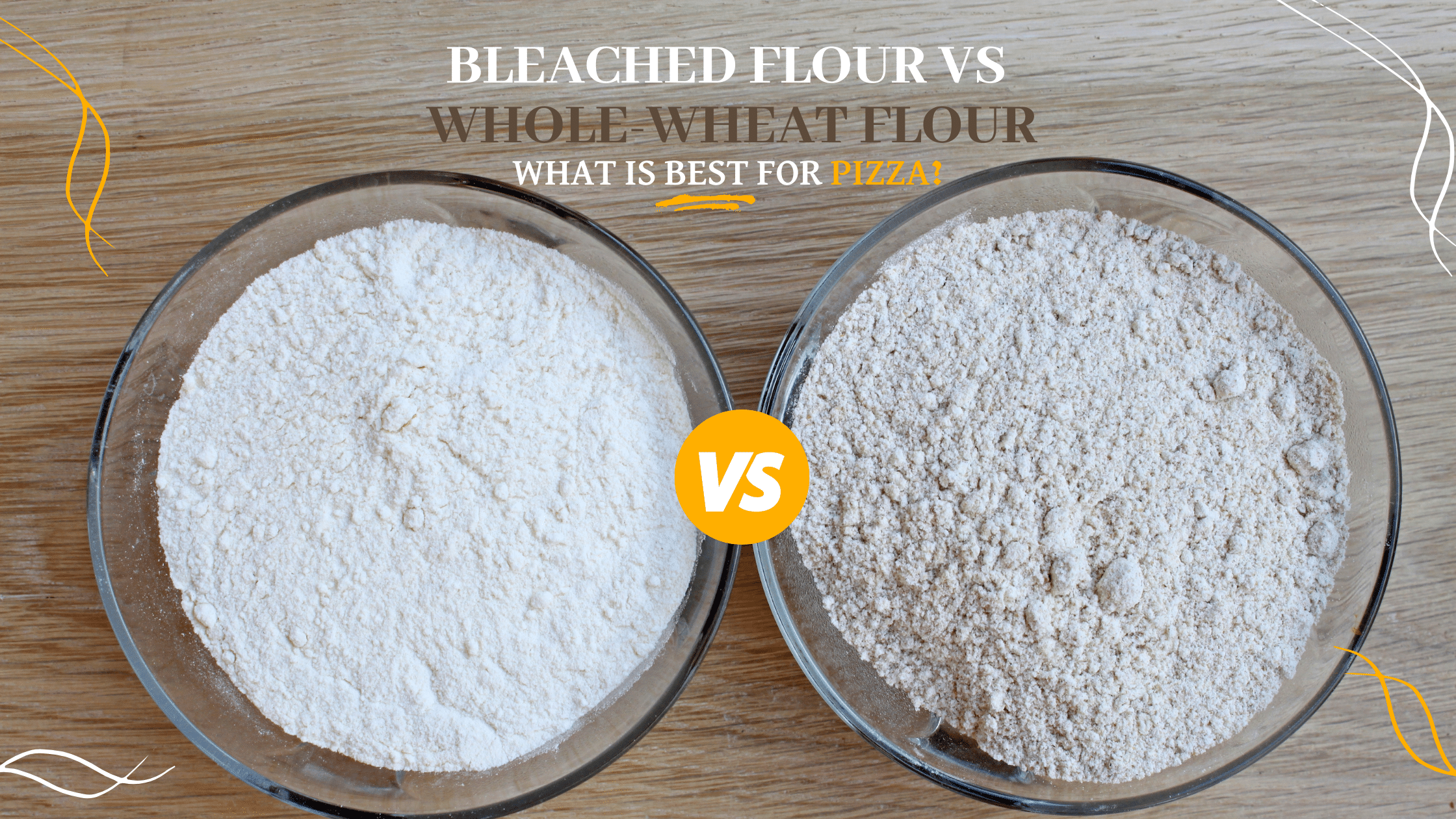
Bleached Flour vs Whole-Wheat Flour: Which is Best for Pizza?
the PROs
Bleached Flour vs. Whole-Wheat Flour The debate over bleached flour vs. whole-wheat flour for pizza is highly contended by those …

Bleached Flour vs Bread Flour: Which is Best for Pizza?
the PROs
Bleached Flour vs Bread Flour Are you interested in finding out the difference between bleached flour vs bread flour for …
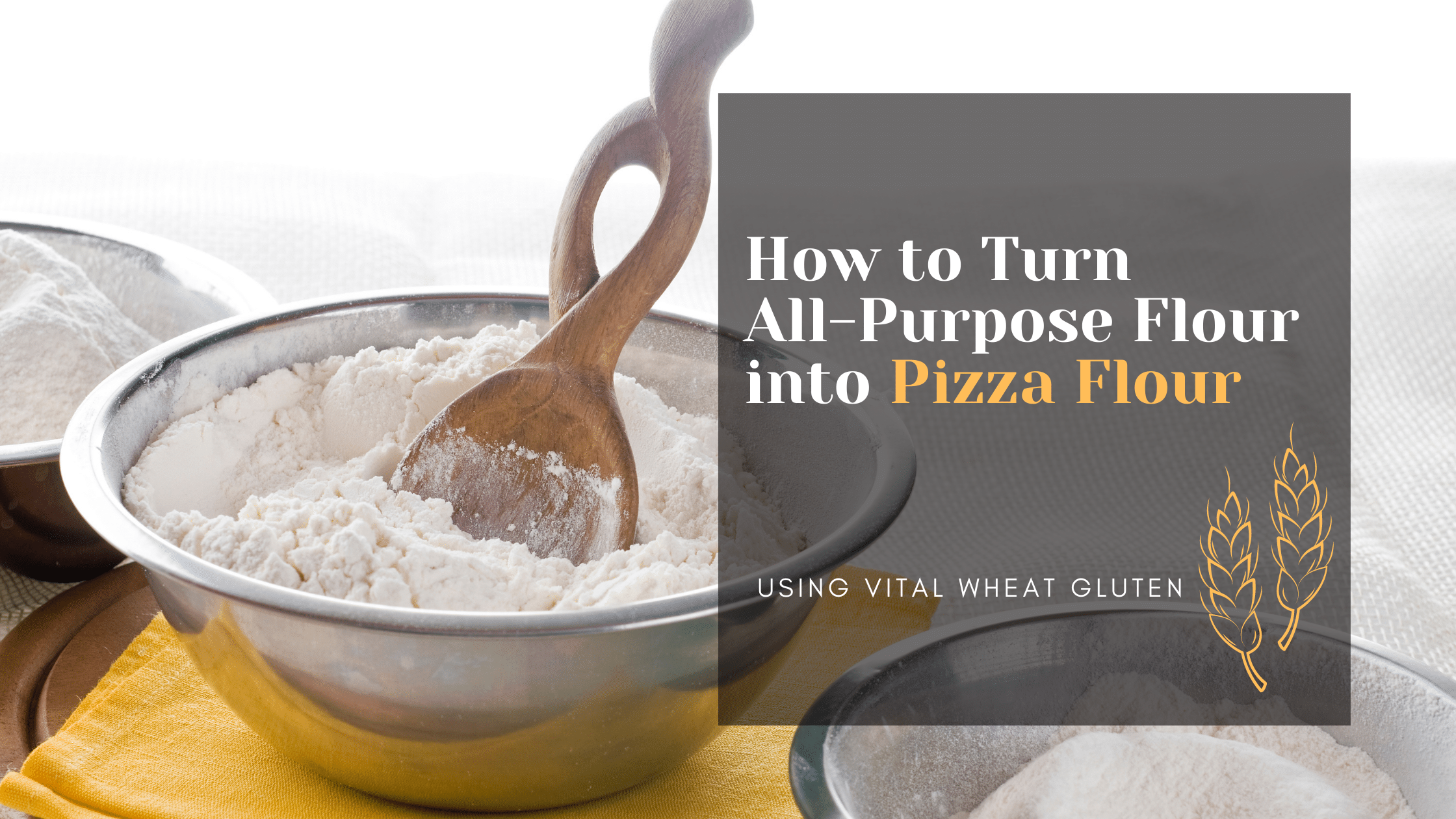
How to Instantly Turn All-Purpose Flour into Pizza Flour
the PROs
How to Turn All-Purpose Flour into Pizza Flour If you want to know how to turn all-purpose flour into pizza …
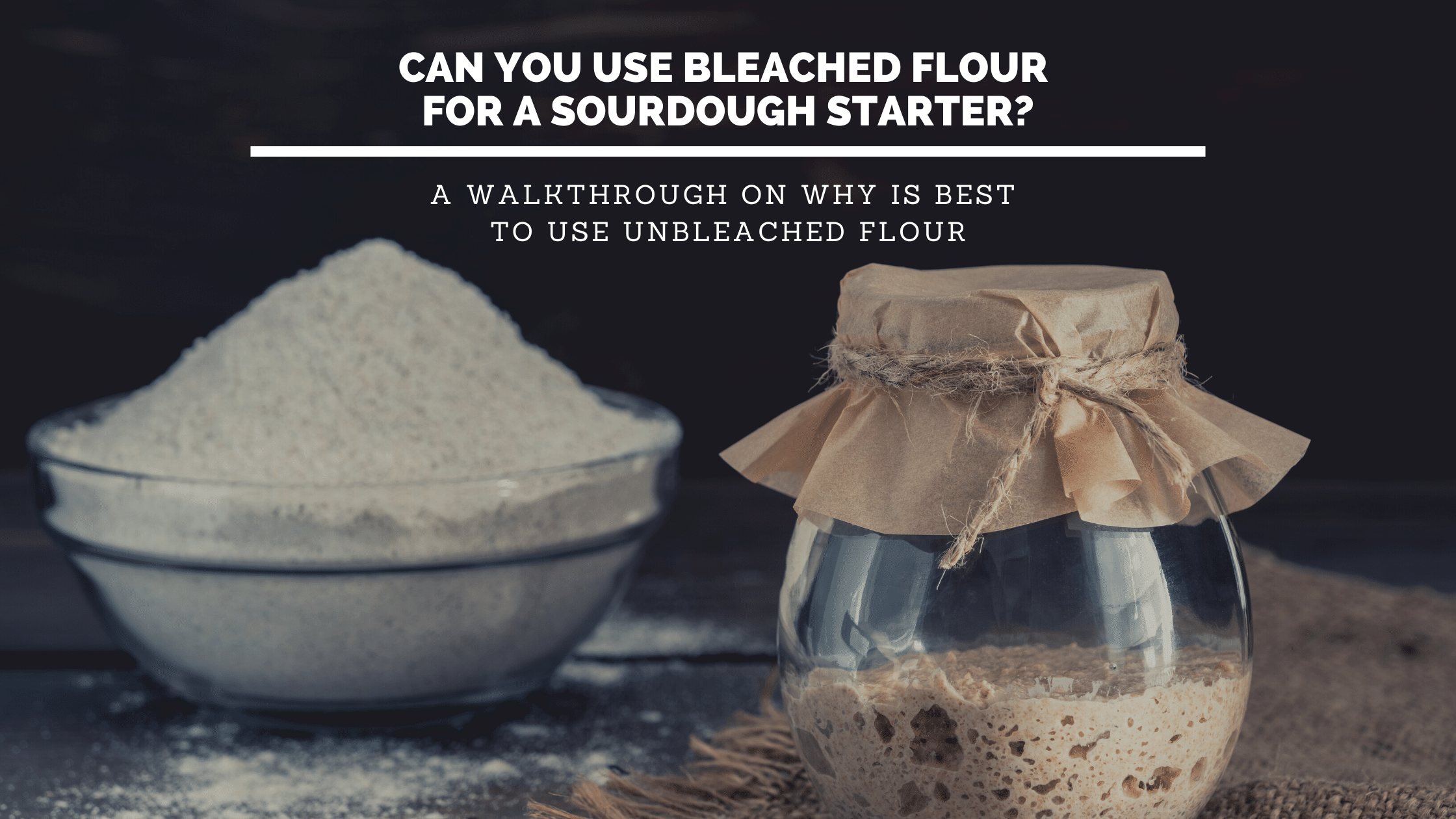
The Truth About Using Bleached Flour for Sourdough Starter
the PROs
Using Bleached Flour in Sourdough Starter? Are you wondering if you can use bleached flour for sourdough starters? Have you …

Bleached Flour vs All-Purpose Flour for Pizza (Why AP Flour is Better)
the PROs
Bleached Flour vs All-Purpose Flour for Pizza? Do you want to know which flour to pick to make your pizza …
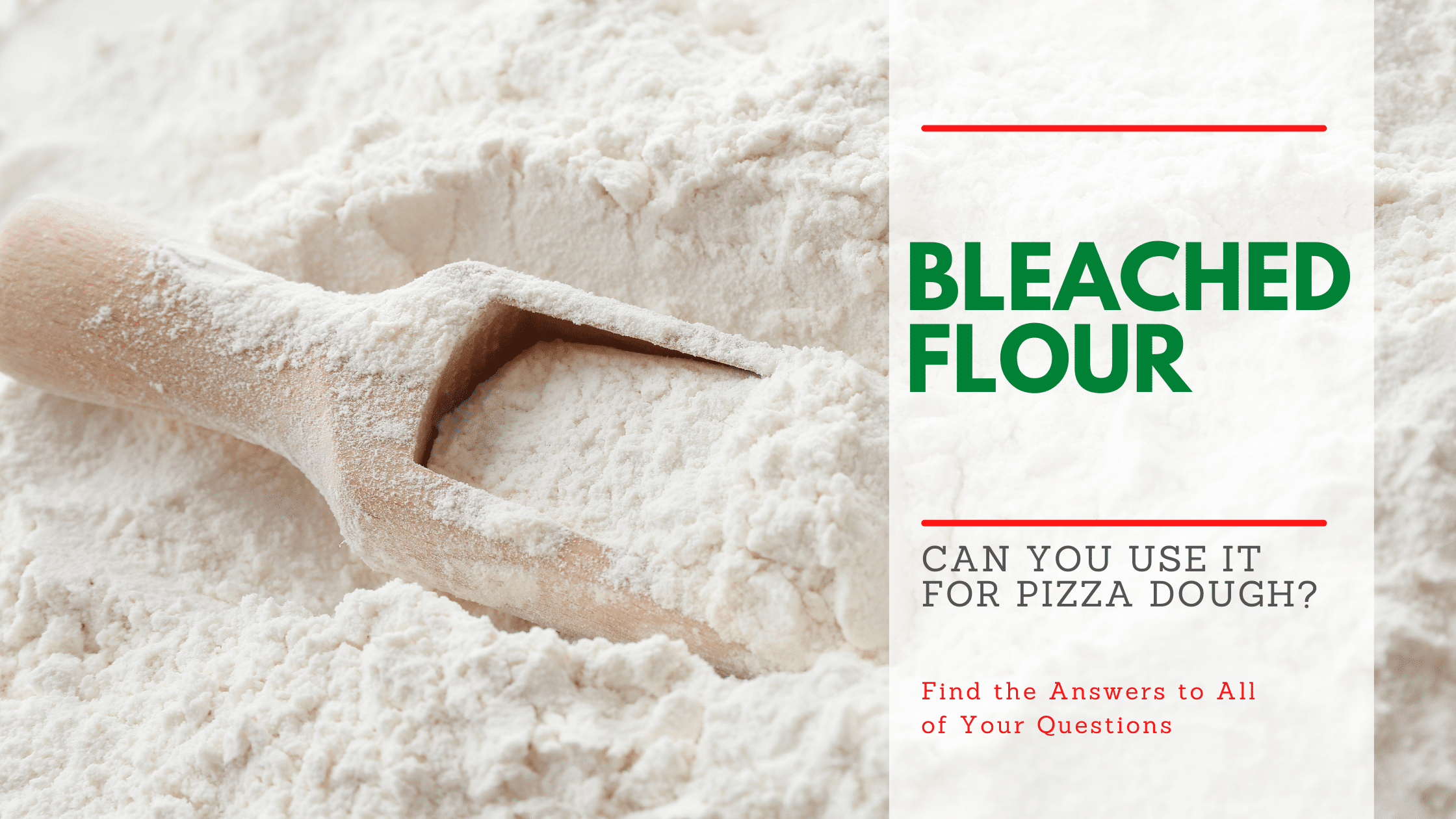
Can You Use Bleached Flour for Pizza Dough? (Why Unbleached Flour Is Better)
the PROs
Bleached or Unbleached Flour for Pizza? When it comes to crafting the ultimate pizza, choosing the right flour is crucial …

Can You Use Self-Rising Flour for Pizza? Here’s What You Need to Know
the PROs
Are you attempting to bake pizza but have run out of pizza flour? What other flour do you have in …
Additional Yeast Resources
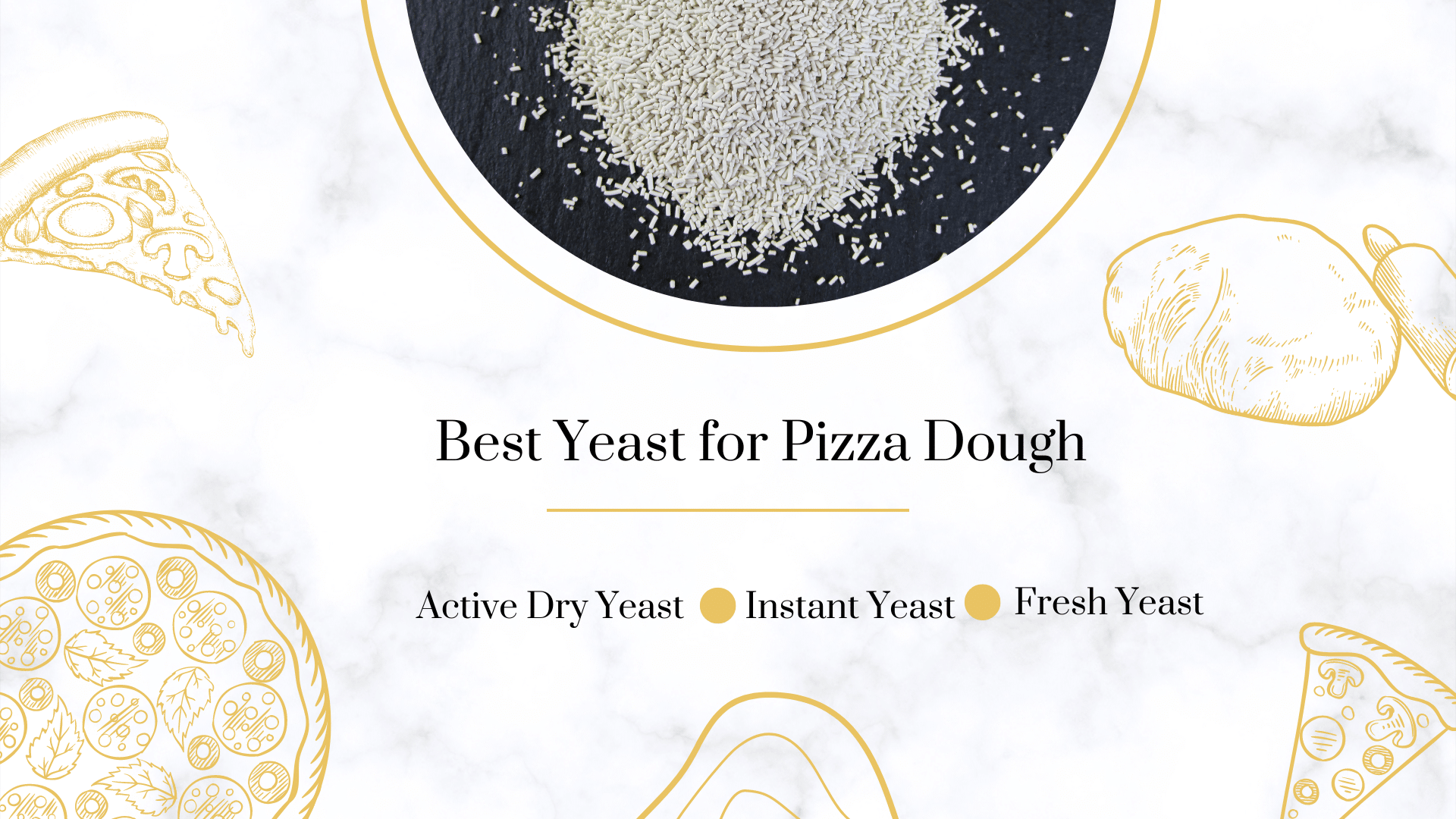
Best Yeast for Pizza Dough: Mastering the Art of Pizza Making
the PROs
What is the Best Yeast for Pizza Dough? Pizza – merely mentioning this delicious dish is enough to stir cravings. …
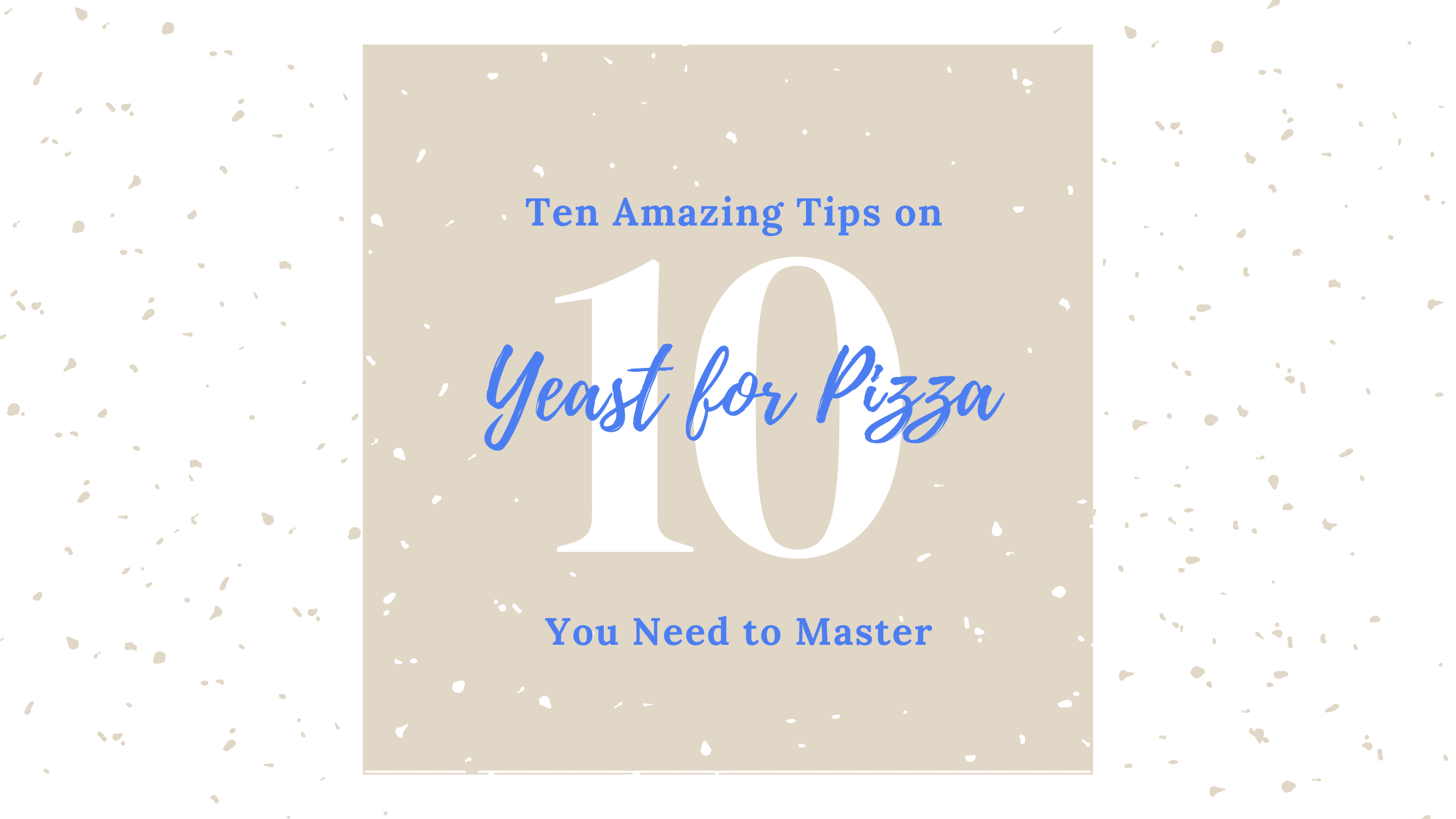
10 Amazing Yeast Tips for Pizza Dough You Need to Master
the PROs
Pizza Dough Yeast Tips Are you looking for some pizza dough yeast tips? We’ve got plenty of information for you! …
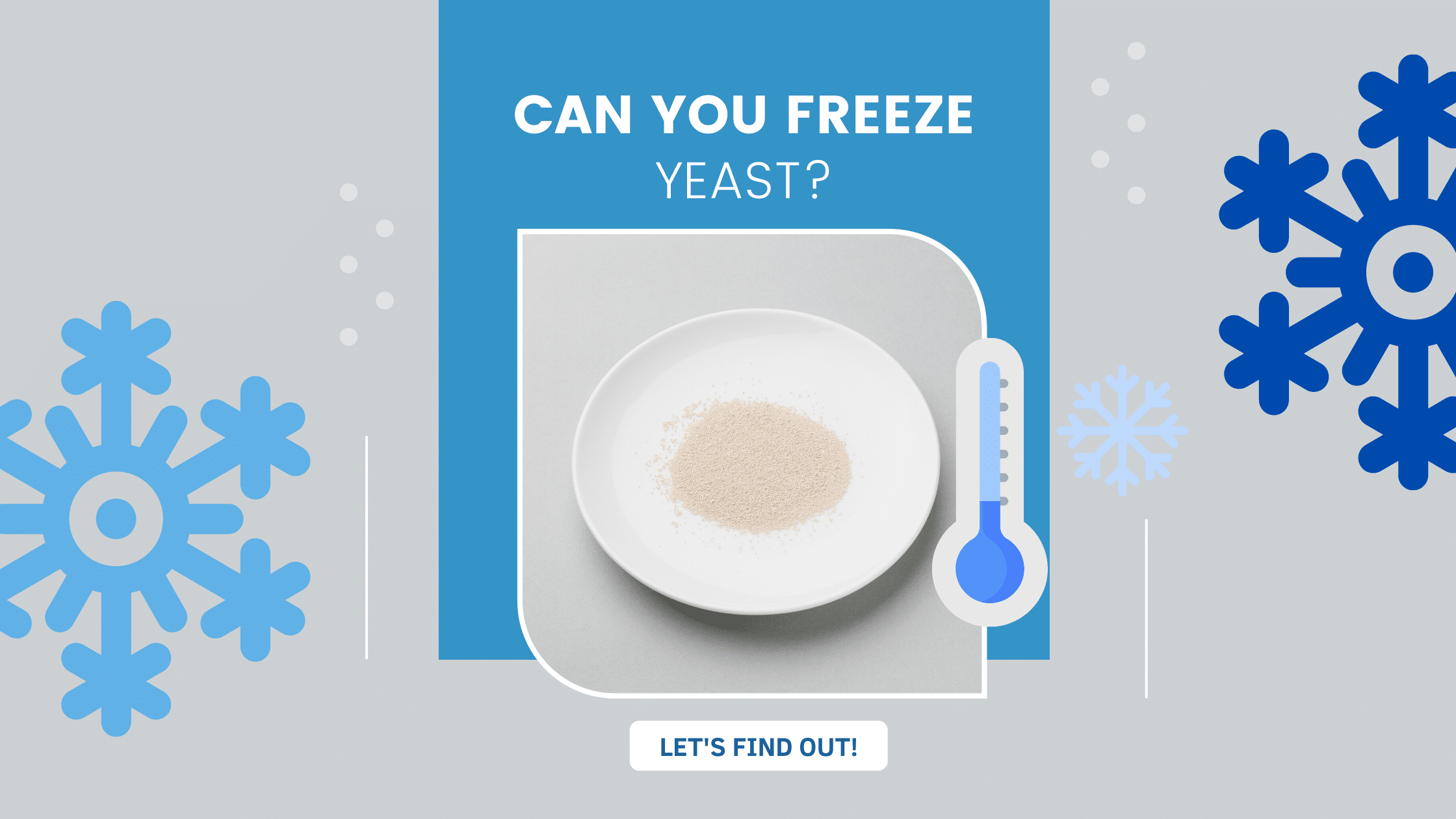
Can You Freeze Yeast? Find Everything You Need to Know
the PROs
“Can you freeze yeast?” – this question has crossed many home bakers’ minds. If you’ve been puzzled by this too, …
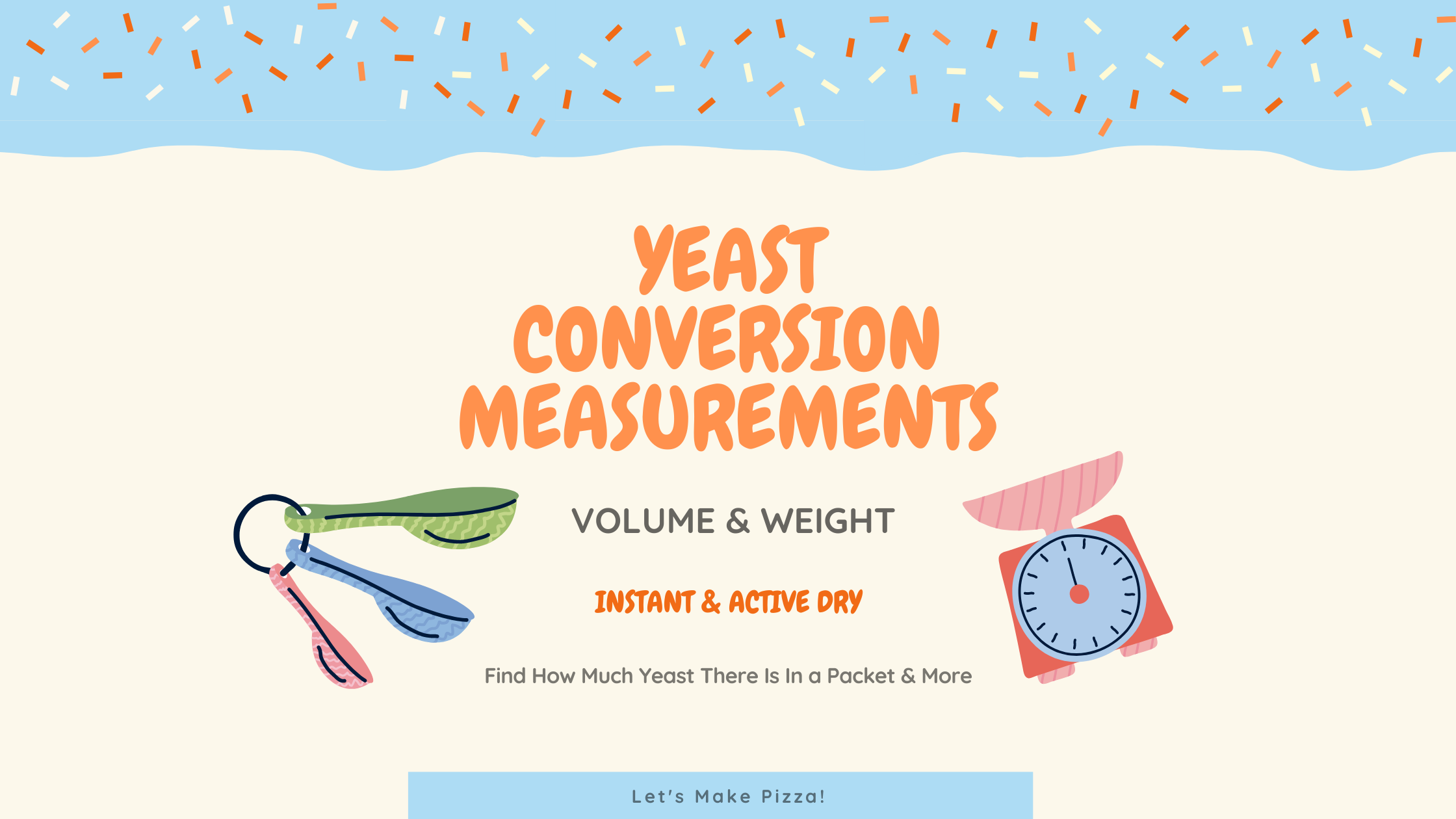
How Much Yeast is in a Packet? Easy Shortcuts (+Yeast Tips from the PROs)
the PROs
How Much Yeast is in One Package? Are you wondering how much yeast is in a packet? Easy! Each yeast …
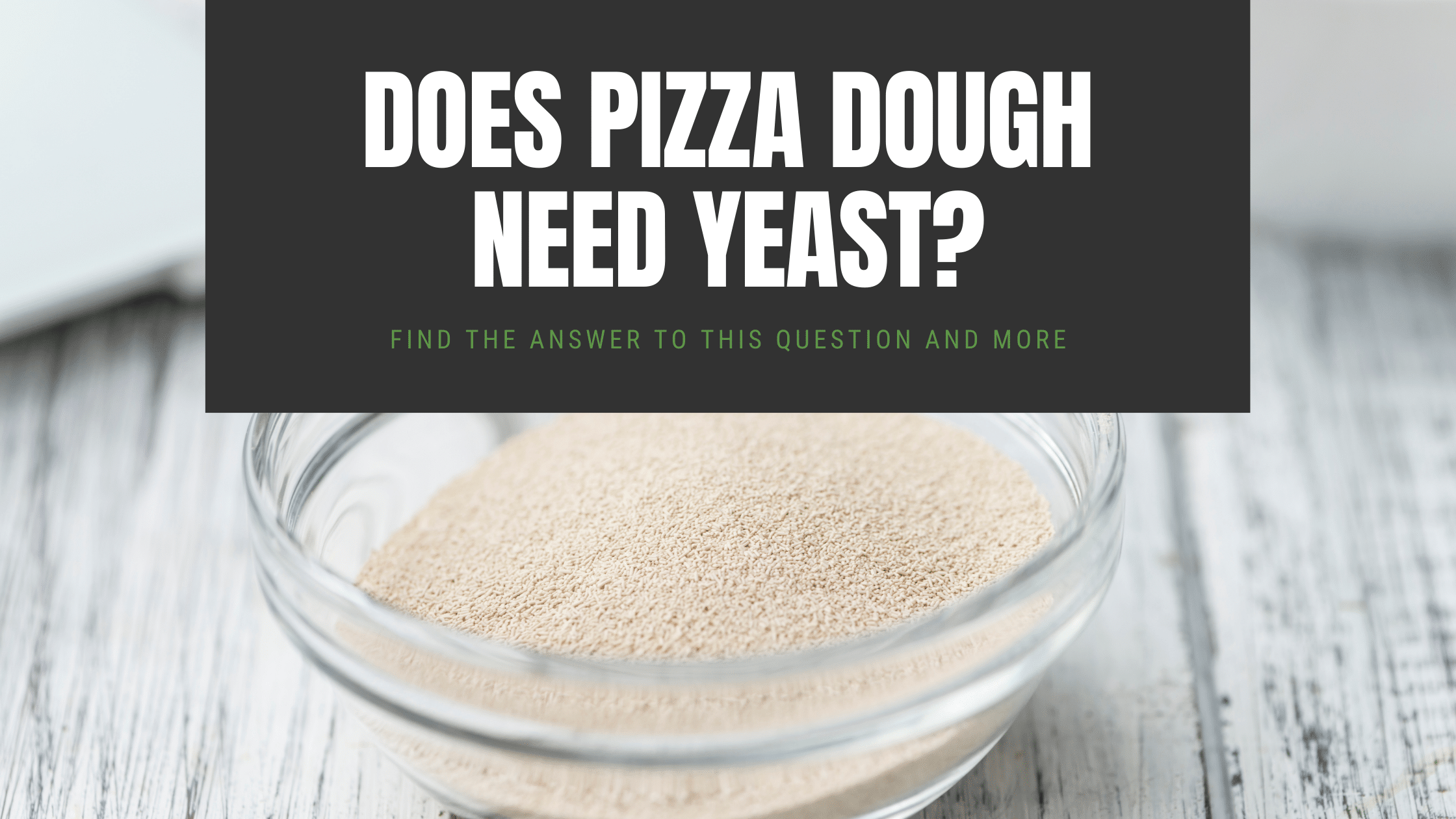
Does Pizza Need Yeast? You Bet! Here’s What You Need to Know
the PROs
Does Pizza Need Yeast? As a home baker, you might ask yourself if pizza needs yeast. Maybe you are feeling …

Active Dry vs Instant: Which is the Best Yeast for Pizza?
the PROs
In this article, we will help you understand the difference between Active dry yeast and Instant and let you know which one is right for homemade pizza. Find which is the best yeast for pizza and why.

Yeast for Pizza Dough: Your Key to Creating Irresistible, Airy, and Flavorful Crust”
the PROs
Most certainly, you read about yeast before or at least have seen the various yeast packets at the supermarket, not knowing the difference between them.
Enjoy!
Not a PRO? Not a Problem!
Take a pizza class to bring your pizza skills to the next level,
so you can be a PRO!
Related Posts
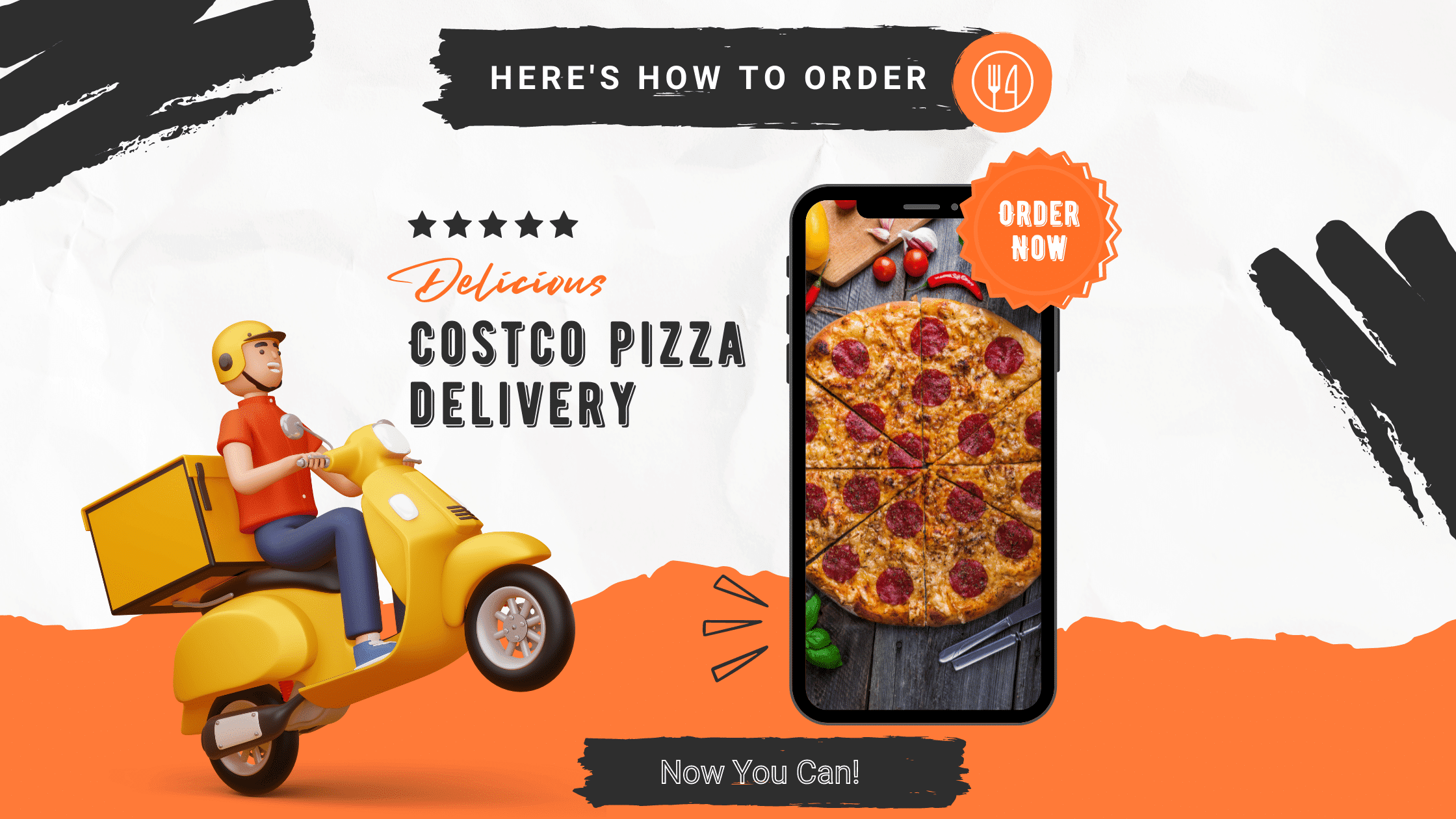
Costco Pizza Delivery: Find How You Can Get It Now!
the PROs
People go to Costco’s food court for many different reasons, but the cheesy slice of pizza they serve is among …

Pizza for Beginners: Don’t Buy Pizza, Make It! Here’s How to Get Started!
the PROs
You have this idea that you want to make pizza at home as opposed to ordering it, but where do you start? Don’t worry! Here you will find answers and directions to all your questions.
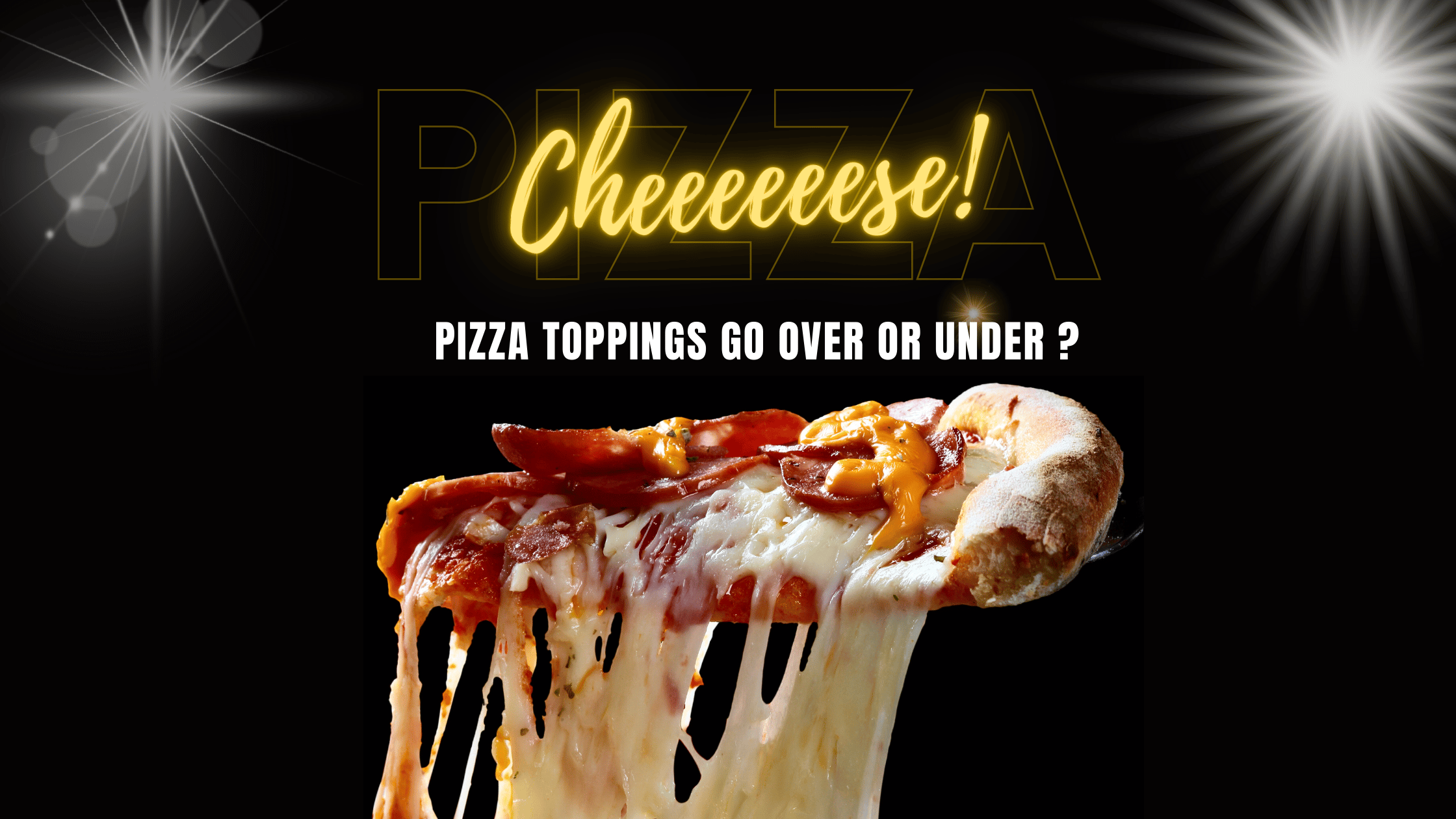
Pizza Toppings Under Cheese or Over Cheese? [Why the Order Matters]
the PROs
Is Pizza Cheese on Top or Bottom? Hey pizza lovers, are you wondering if you should layer pizza toppings under …
Newsletter
Subscribe to our Recipe of the Week newsletter and receive our partners’ latest recipes, tips, and discount offers.
Keep in Touch!
